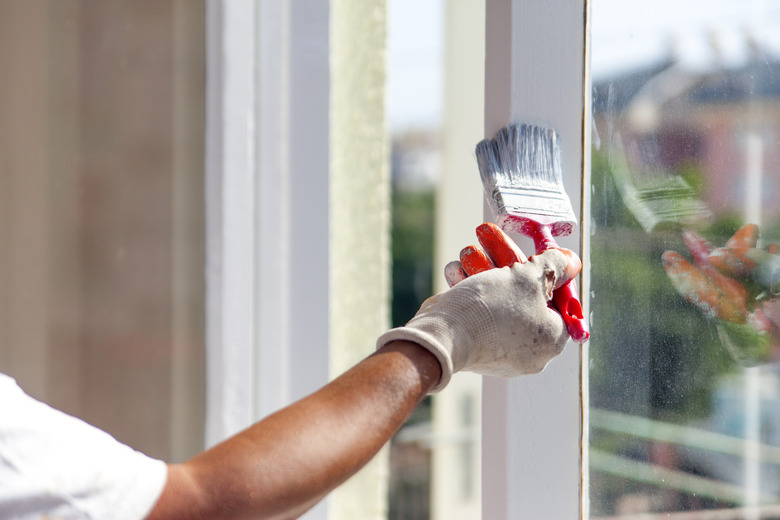Can You Paint Over High-Gloss With Semigloss Enamel Without Preparation?
We may receive a commission on purchases made from links.
No, you can't, to be blunt. If you have a high-gloss paint on your wall and you want to paint over it with any kind of paint, not just with a semigloss finish, you'll first need to prep it. Why? Because it's all about the texture when it comes to paint adherence.
Importance of Removing the Gloss
Importance of Removing the Gloss
Before covering existing paint, the most important step is to first remove any glossy finish. Both semigloss and high-gloss paints are very smooth. They have a shiny finish with an attractive sheen, and they resist moisture, which is why they are frequently used in kitchens and bathrooms.
It shouldn't surprise you that this nice, smooth, glossy finish not only repels moisture, but its lack of texture also repels paint. And it doesn't matter if the paint is latex or oil-based; each is equally smooth and shiny.
The remedy is to either sand the surface to remove the gloss or to use a special cleaning solution instead, like a liquid deglosser. Some experts recommend doing both, i.e., cleaning the surface before sanding, while others are proponents of using just one method: either sanding the surface or using a deglosser. Since there is no consensus even among experts, evaluate the level of gloss on your surface and choose the method that makes the most sense to you.
Use Sandpaper to Remove Gloss
Use Sandpaper to Remove Gloss
When sanding a surface to remove the gloss, your goal is to just remove the gloss. That means that you are just roughing up the finish, not sanding down to bare wood. Use a 120-grit sandpaper to start and then finish with a 180-grit sandpaper. Watch the gloss because it's visible. You're finished when there is no more gloss.
Warning
If your walls were painted before 1978, the paint may contain lead. If this may be the case, avoid sanding.
Use a Homemade Cleaning Solution
Use a Homemade Cleaning Solution
While there are plenty of excellent chemical cleaning solutions that are commercially available, you don't have to use them. Mix a gallon of warm water with 1/2 cup of ammonia instead. Using a rag, apply the solution to your glossy surfaces. If you're working in the kitchen, spend extra time on any area that might have grease or grime buildup. After covering all the areas, wipe them down with only water to remove the ammonia and let the surfaces dry completely.
Use a Commercial Cleaning Solution
Use a Commercial Cleaning Solution
Commonly called "liquid degreasers" or, even more evocatively, "liquid sandpaper," commercial products designed to remove glossy paint come in many flavors, from those designed to just rough up a surface to those capable of stripping paint entirely. But you don't need to strip the paint entirely in this case, so talk to someone at the hardware store or read some reviews to determine the best product for your project.
Consider the product's toxicity and method of application. Generally, products that are water-based are less toxic and produce fewer VOCs than oil-based products, and some are biodegradable. But even these less-toxic degreasers can still irritate your skin and eyes, so be sure to open the windows or otherwise ventilate the area and wear protective gear.
After Gloss Removal
After Gloss Removal
When you have cleaned, degreased, or sanded your wall to no-gloss perfection, you're ready to paint. Most experts recommend starting with a primer. Follow that up with your topcoat of choice, whether it's satin, semigloss, or flat.
